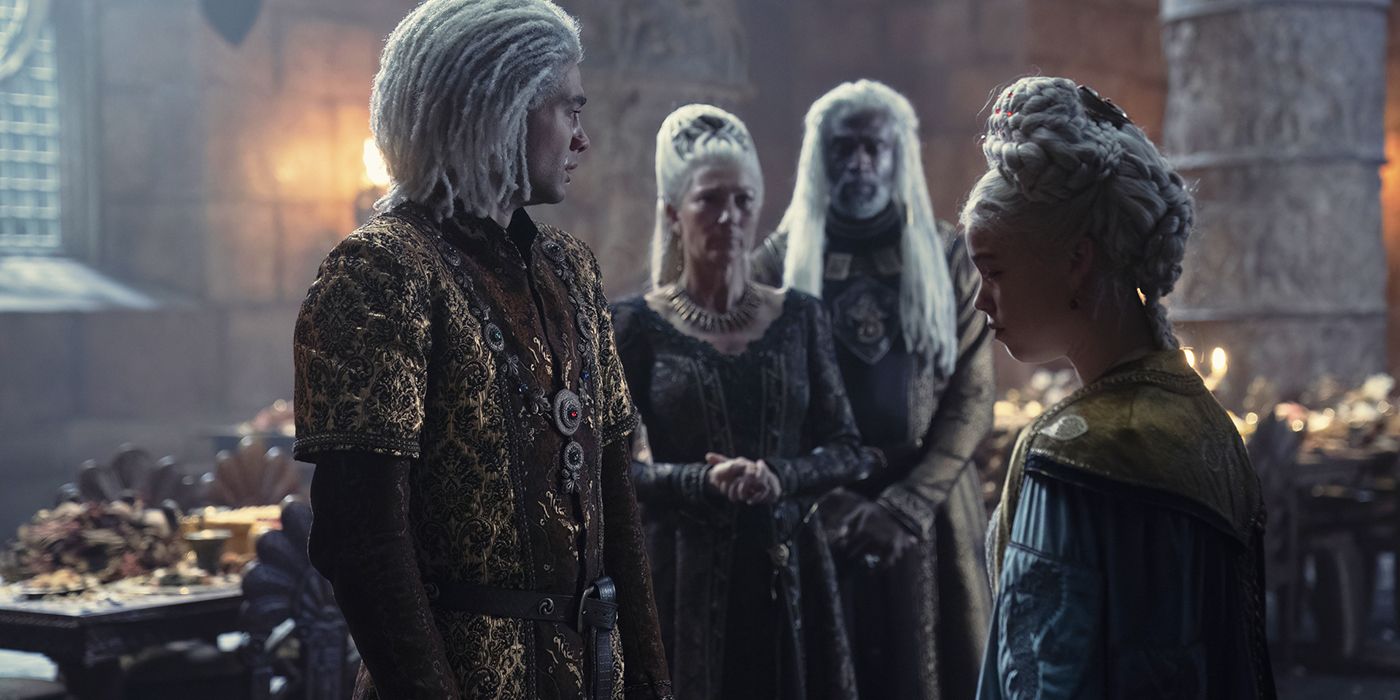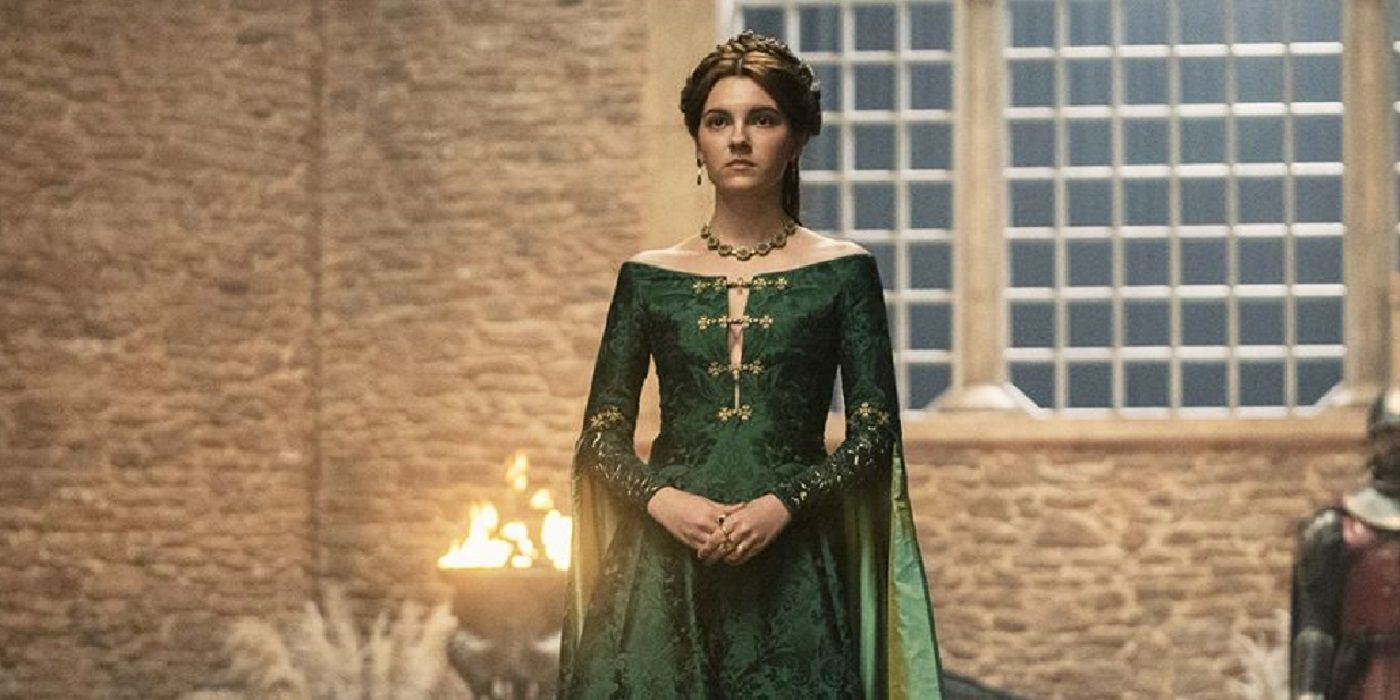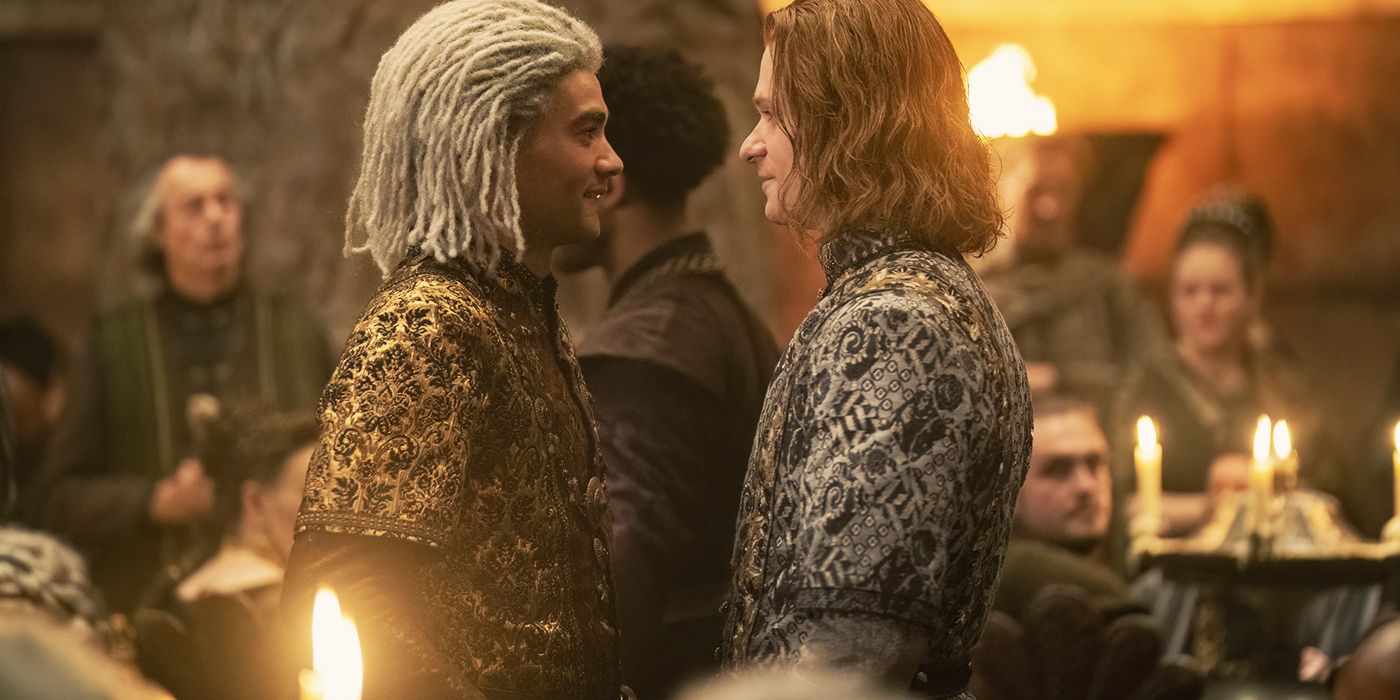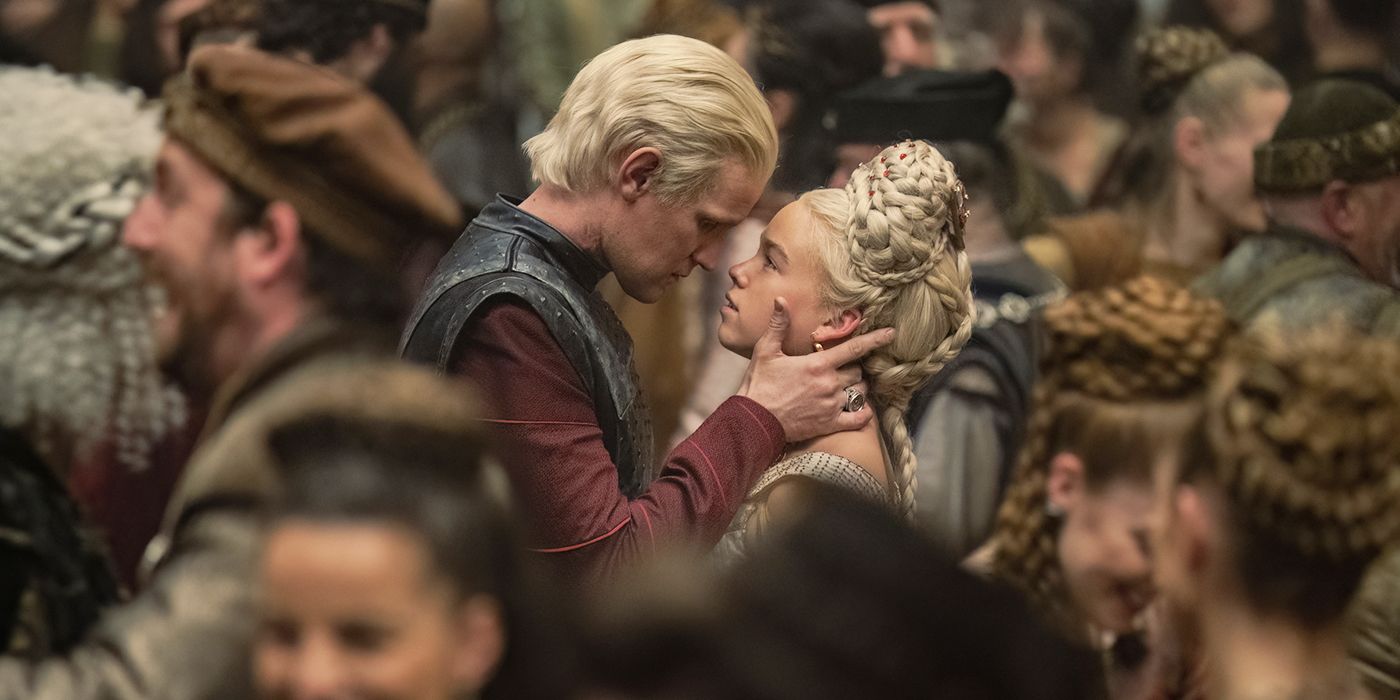Editor's note: The following contains spoilers for Episodes 1-5 of House of the Dragon.As a prequel, House of the Dragon had a lot to live up to its predecessor. Game of Thrones was HBO’s premiere fantasy series that kept audiences tuned in week after week. The show, based on George R.R. Martin’s epic novel series A Song of Ice and Fire, was not only entertaining for its complicated political storylines but also for its scandalous romances and violent battles. Those three elements — politics, romance, and violence — often culminated in wedding celebrations, during which the possibility of what could go wrong was always met with certainty. This is true for both Game of Thrones and House of the Dragon, the latter of which rises up to the challenge of delivering a wedding full of political intrigue, shock, and violence.
In the original series, the Red Wedding — the most well-known and infamous wedding among audiences — marked the deaths of Robb Stark (Richard Madden), his wife Talisa (Oona Chaplin) and unborn child, and his mother Catelyn Stark (Michelle Fairley). While the massacre of Robb Stark and his army at the wedding gave the Lannisters the upper hand, they too would find tragedy at the wedding of the boy-king Joffrey Baratheon (Jack Gleeson) and Margaery Tyrell (Natalie Dormer). Joffrey, poisoned by his wife’s grandmother Olenna Tyrell (Dame Diana Rigg), died in pain with blood spewing from his nostrils. Later on Joffrey's father/uncle Jaime Lannister (Nikolaj Coster-Waldau) would learn that Olenna was behind the crime. Clearly, the worst place to be at in the Westeros is at a wedding.
The Drama of the Wedding Is Tradition in Game of Thrones
So, by episode 5 of House of the Dragon’s first season, there were already high expectations for the marriage between Princess Rhaenyra Targaryen (Milly Alcock) and Ser Laenor Velaryon (Theo Nate). As are all marriages in Westeros, their marriage is also political. King Viserys (Paddy Considine), after ignoring multiple requests to aid the conflict against the Crabfeeder in the Stepstones and Free Cities, had strained his alliance with Lord Corlys Velaryon (Steve Toussaint). Instead, the king’s brother Daemon (Matt Smith) stepped in to defeat the Crabfeeder. With word that Corlys was thinking of marrying his daughter to a Braavosi, and with further allegations that Daemon seduced had his daughter, Viserys decides to make a more assertive move to arrange Rhaenyra’s marriage to Laenor. Unbeknownst to Viserys, this arrangement would open up a can of worms full of jealousy, betrayal, and violence.
The climax of the episode is structured around the feast celebrating the marriage, but it also functions as a kind of locked room, political thriller. Westeros’ most prominent families are in attendance in a large dining hall which quickly turns into a ballroom. The last time we saw so many prominent leaders and guests “trapped” in a single room, we saw the destruction of the Great Sept blown up in a green fiery blaze. It’s ironic, then, that the late arrival of Queen Alicent Hightower (Emily Carey) carries the same color of green — an announcement of war against her own husband’s family. But Alicent’s entrance doesn’t defuse all the tension within the room. Daemon’s arrival, too, fills the air with an uncomfortable silence, especially since the rumors surrounding his and Rhaenyra’s affair are still fresh. However, both of these processions don’t compare to the actual celebration.
House of the Dragon Stages the Scene Perfectly Leading Up to the End
The pageantry and dance choreography of the following scenes not only capture the politics between the Targaryens, Velaryons, and even the Hightowers, but it also clearly outlines the various romances and liaisons in the room. The fact that Rhaenyra switches between many dance partners points to the unconventional relationships she and others are presently engaged with. These relationships are less a love triangle but more so an entangled web of taboo and scandal. The repercussions of the previous episode reverberate throughout the dancing of this episode.
While Rhaenyra already knows of Laenor’s queer identity — something that Westeros is very prejudiced against — Laenor and his lover Joffrey Lonmouth, “the Knight of Kisses,” (Solly McLeod) quickly deduce that Ser Criston Cole (Fabien Frankel) is Rhaenyra’s lover. Knowing this, Joffrey confronts Criston, wanting to make a pact to protect both Laenor and Rhaenyra in addition to their secret relationships.
Elsewhere, Daemon is confronted by the cousin of his late wife Lady Rhea Royce, who he had potentially disposed of earlier in the episode. While Viserys and his new Hand listen in on their conversation, Daemon makes known his intention of claiming Rhea’s inheritance at Runestone. Although Viserys is able to keep silent during this scene, he quickly becomes infuriated when he sees Daemon coming too close Rhaenyra on the dance floor, so much so that it overwhelms him and his nose begins to bleed. Plus Daemon dances with Laena Velaryon (Savannah Steyn) and flirts with her, adding more layers to Daemon's involvement in the court.
These various scenes are cut together in such a way that the tension is felt throughout. Specifically, they are cut together through a series of looks and POV shots from one character to another. Even for the characters who are not so engaged in the dancing, such as King Viserys and Queen Alicent, their stares from the dining table not only dictate extreme judgment but also hatred. This is especially the case with Alicent, who has just recently found out from Ser Criston’s confession about Rhaenyra’s loss of virginity. So, while the dancing and music surrounding the marriage festivities are choreographed, so too are the shots of each character’s look. We already know the high stakes for Rhaenyra and Laenor’s marriage, especially when it comes to the throne. But these looks can kill – the tensions are personal just as they are political. Of course, all this tension has to be released at some time, and that time ultimately comes down to Ser Criston Cole’s violent outburst. Corrupted by his broken vow of chastity and Rhaenyra’s refusal to run away and marry him, Criston lashes out at Joffrey, Laenor’s lover, beating him to death.
The fact that the victim of the latest marriage “massacre” shares a name with King Joffrey Baratheon is perhaps a great inside joke on the part of the creators of House of the Dragon, calling back to the boy-king’s death at his own wedding celebration. The joke is definitely warranted, as House of the Dragon follows in the tradition of Games of Thrones with its entertaining and shocking weddings. Or maybe people named Joffrey are continuously doomed in Westeros. Seeded in the politics between the various houses and factions of Westeros are also the romances and affairs among its most important persons. These relationships are quite taboo for Westeros: the Lord Commander of the Kingsguard’s broken vows, the queer identity of the royal groom, and the incestuous relationship between the bride and her uncle. These relationships set up the high stakes and tensions that make this universe so entertaining. The dining hall and dancing scenes in Episode 5 are Hitchcockian in effect, a ticking time bomb that leads to Sir Criston’s violent outburst. It’s a great way to end this phase of the series, as the next episode will skip ahead ten years with a new cast taking up older versions of Rhaenyra and Alicent.




